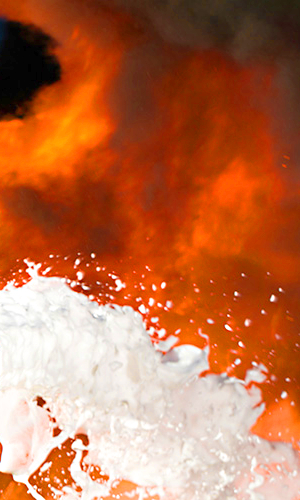CRC improves toxic breakdown
 Australian experts have come up with a new way to break down toxic fire-fighting foams.
Australian experts have come up with a new way to break down toxic fire-fighting foams.
Per- and poly-fluorinated alkyl substances (PFAS) are extremely stable chemical compounds, which makes them perfect for industrial uses including firefighting foams, nonstick cookware, food packaging, insecticides, and waterproof and fire-resistant fabric.
But their stability also means that they do not break down easily and therefore accumulate in the environment.
They have become so widespread that almost every person on Earth has some level of PFAS in their blood.
A growing body of research has shown that PFAS can be dangerous to human health.
PFOS (perfluorooctane sulfonate) and PFOA (perfluorooctanoic acid) in particular are two commonly used PFAS that are known to enter ecosystems and move up food chains, accumulating in animal and human tissue, including the liver and blood.
PFAS have been linked to bladder and liver cancer, endocrine disruption, and developmental and reproductive toxicity, including neonatal mortality, and are potentially lethal to animals.
The substances have turned up at a number of Australian sites.
Researchers at the Cooperative Research Centre for Contamination Assessment and Remediation of the Environment (CRC CARE) have used electricity to generate substances – including free radicals – that are extremely strong oxidising agents.
These substances strip the PFAS molecules of electrons and thus break them down into smaller – and safe – components. The oxidising agents themselves are unstable and rapidly break down into harmless compounds.
They say their approach – ‘pfasCARE’ – is not limited to PFAS and can potentially be used to treat almost all organic contaminants.
Australian authorities are recognising a growing number of sites where PFAS have contaminated groundwater, surface water and soil, in some cases spreading to residential areas. Current remediation approaches involve either removal or breakdown.
“While removal can be effective,” said lead researcher Dr Cheng Fang, “it does not solve the problem of what to do with the hazardous chemicals, which require subsequent treatment to ensure they are not gradually released again.”
Breakdown or mineralisation ensures that PFAS are broken down to safer substances such as carbon dioxide and fluoride.
However, the innate stability of PFAS means that an enormous amount of energy (e.g. temperatures greater than 1100 °C) is required, and this is very costly. Cheaper breakdown approaches, using chemicals, ozone or ultraviolet light to oxidise PFAS, have been largely unsuccessful or have left behind by-products that are as hazardous as the PFAS themselves.
“CRC CARE plans to offer pfasCARE in combination with its proprietary matCARE technology, a modified clay substance that irreversibly locks up PFAS,” said CRC CARE Managing Director Professor Ravi Naidu.
“At this stage, pfasCARE can be used to treat contaminated wastewater or groundwater, with research under way to target contaminated soil as well. This is a world-first approach that will offer a complete clean-up solution for PFAS-contaminated sites, something that until now has not been available.”







 Print
Print